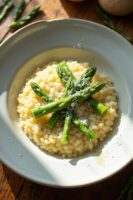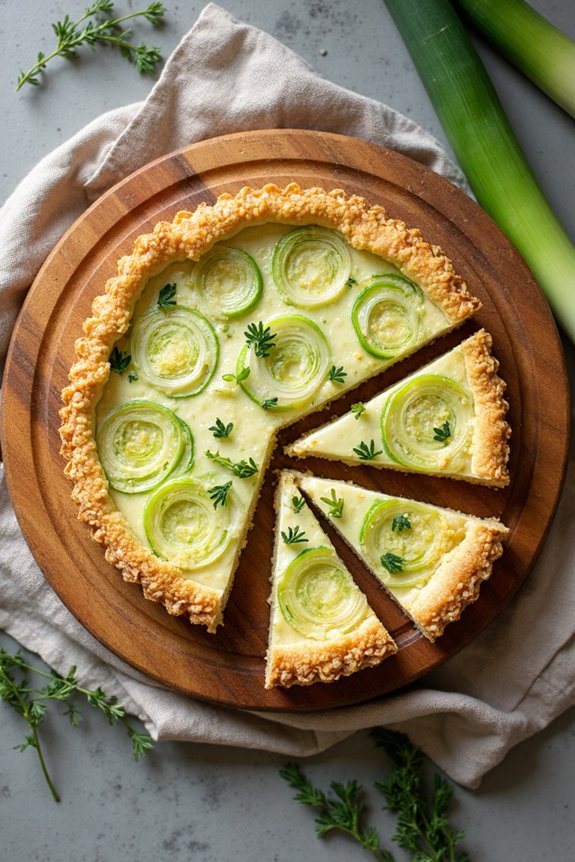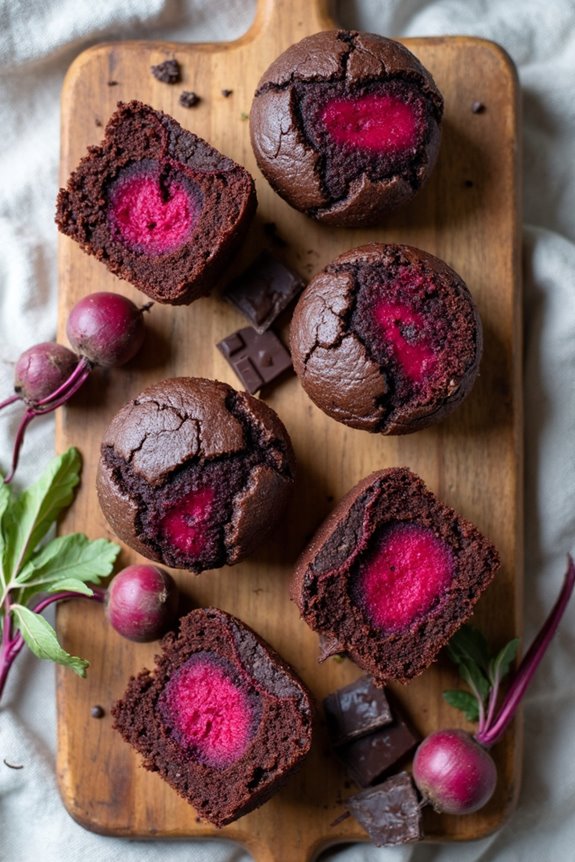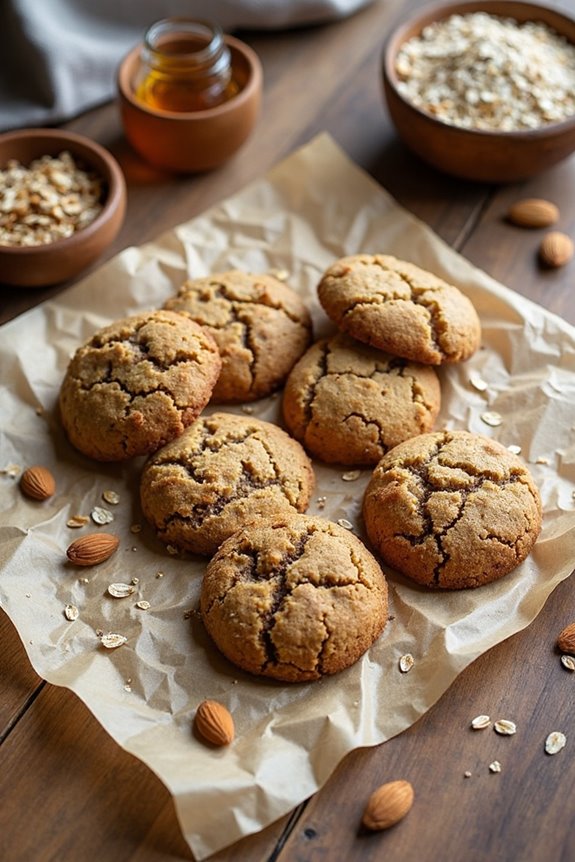If you want a rustic asparagus pasta frittata, here’s a simple way to nail it! Start by sautéing 1 cup of chopped fresh asparagus in 2 tablespoons of olive oil until tender. Toss in 2 cups cooked pasta, then pour over 4 lightly beaten eggs mixed with ½ cup grated Parmesan and fresh basil. Cook briefly on the stove and bake at 350°F for 20 minutes until set. This cozy dish is perfect warm or at room temp. Stick around to uncover tips that make it even better!
History
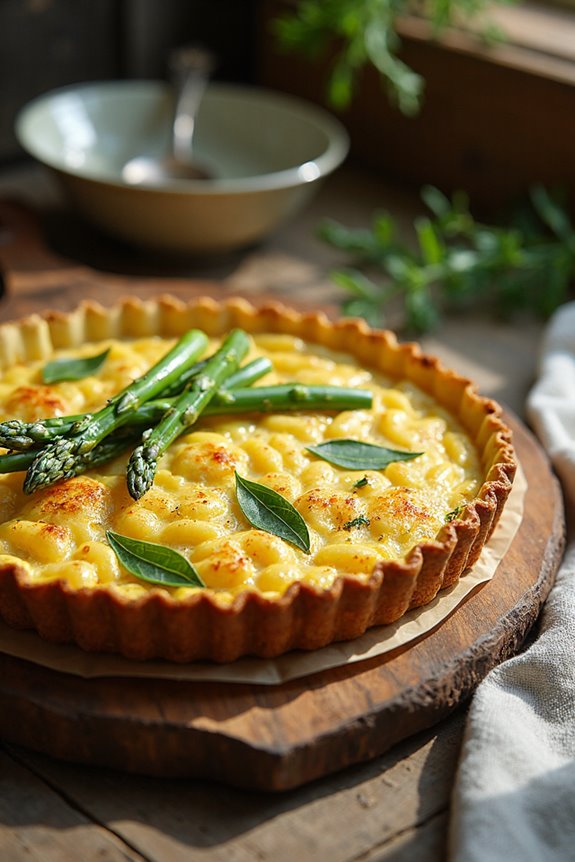
Although the frittata has been around since the 16th century, it’s still a fantastic dish you can enjoy today! Originating from Italy, this rustic dish was born out of clever culinary practices. Families used seasonal ingredients like asparagus and other vegetables, plus leftovers, to create hearty meals without waste.
Here’s why frittatas remain popular:
- Versatile cooking techniques: stovetop frying followed by oven finishing.
- Simple, fresh ingredients reflecting local harvests.
- A delicious way to bring people together around the table.
Common Ingredients
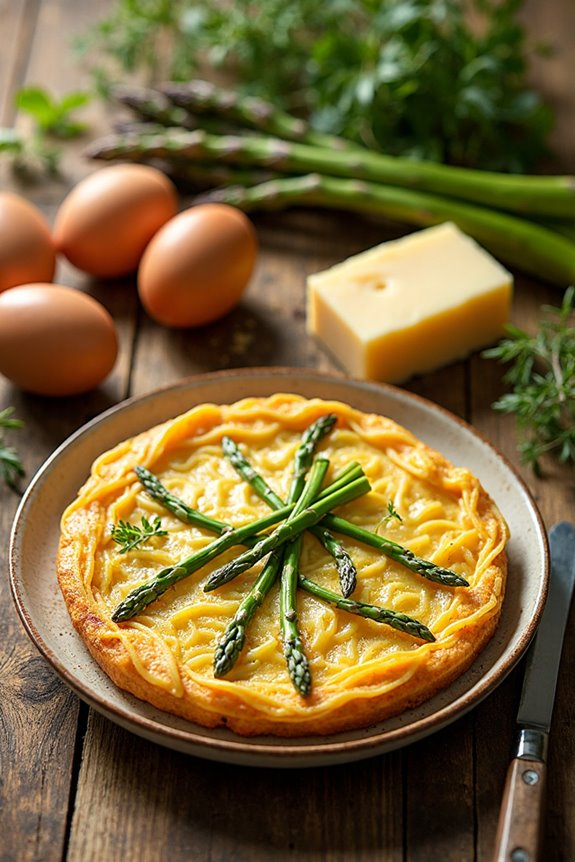
When it comes to making a rustic asparagus pasta frittata, the ingredients you choose really set the tone for the dish. Here’s what you’ll need:
- Fresh asparagus – adds a vibrant, earthy crunch.
- Olive oil – perfect for sautéing and boosting flavor.
- Eggs – the creamy texture foundation.
- Grated cheese like Fontina or Parmesan – for richness.
- Fresh herbs such as parsley or basil – to brighten things up.
Sauté your asparagus in olive oil first, then blend with eggs and cheese for that dreamy, rustic frittata recipe you’ll want to make again and again!
Recipe

There are three main steps to making this rustic asparagus pasta frittata that you’ll find easy and satisfying. First, sauté asparagus in a bit of olive oil over medium heat until tender. Next, toss the cooked pasta with the asparagus and pour your whisked egg mixture over it, adding grated Parmesan for extra flavor. Finally, cook on the stove briefly, then bake the frittata at 350°F for 20-25 minutes until set and fluffy. Once done, serve warm or at room temperature—perfect for sharing and enjoying together. Trust me, your kitchen will thank you!
Expert Tips
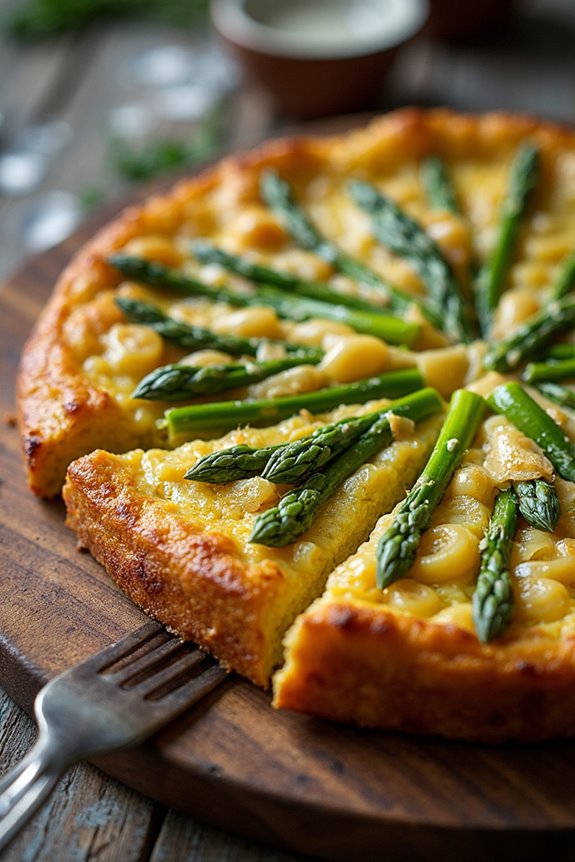
Now that you’ve got the steps down for making your rustic asparagus pasta frittata, let me share some expert tips that’ll take your dish from good to great. First, use high-quality olive oil and fresh basil to season your chopped asparagus—it makes all the difference! Blanch asparagus for 1½ minutes to keep it crisp. When you mix the eggs, don’t overbeat; this keeps the frittata light and fluffy. Bake the frittata at 350°F, stirring occasionally to cook evenly. You can make the frittata ahead and serve it warm or at room temperature, drizzled with balsamic vinegar. Enjoy!
Final Thoughts
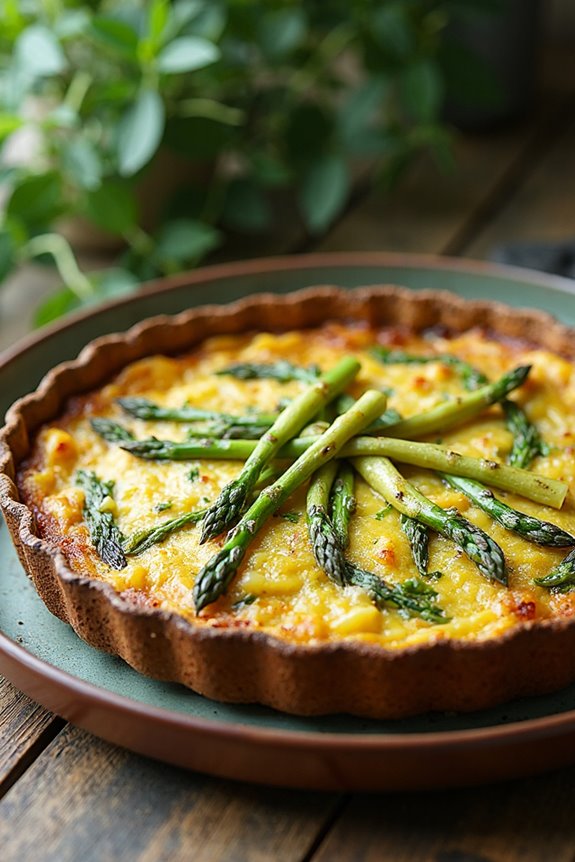
Although this rustic asparagus pasta frittata might sound fancy, it’s actually a simple, flexible dish you can easily adapt to your taste or whatever’s in your fridge. Here’s why the Asparagus Frittata makes a perfect quick and easy meal:
- Sauté asparagus in olive oil.
- Cook pasta in boiling water.
- Add the eggs and mix well.
- Bake at 350°F for 20-25 minutes.
Serve it warm or at room temperature. Store leftovers in an airtight container for up to two days. Don’t hesitate to add your favorite veggies or cheese for customization!
Frequently Asked Questions
How to Make an Italian Frittata With Asparagus?
I love starting with fresh asparagus preparation and classic Italian ingredients. Combining sautéed veggies with eggs, exploring frittata variations, and using cooking techniques brings rich flavor combinations. It’s perfect for breakfast ideas, meal prep, and seasonal nutrition.
What Makes a Frittata so Different From an Omelet?
When I compare egg dishes, frittatas differ from omelets in cooking techniques, offering thicker texture, varied ingredient mix, richer flavor profiles, and versatile serving suggestions—perfect for meal prep, sharing, and diverse breakfast options with cultural origins.
How Does the Frittata Get Its Fluffy Texture?
You might think whisking eggs alone makes a frittata fluffy, but it’s also about air incorporation, ingredient ratios, temperature control, mixing methods, cheese addition, vegetable preparation, baking technique, and resting time—all working together for that perfect texture.
How Do You Keep a Frittata From Getting Soggy?
To keep a frittata from getting soggy, I drain vegetables well, use a nonstick pan, whisk eggs thoroughly, cook slowly over low heat, choose absorbent ingredients, bake properly, then let it cool before serving at room temperature.


